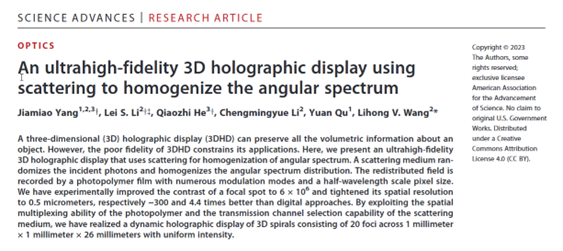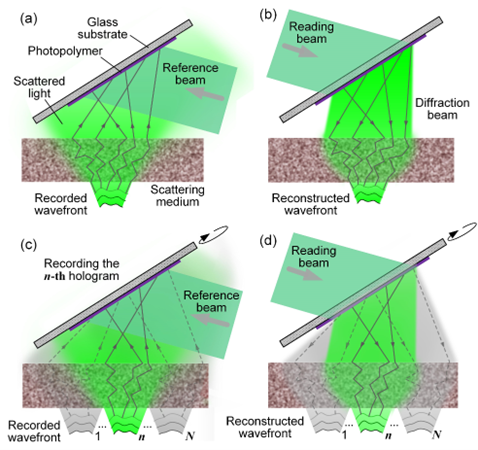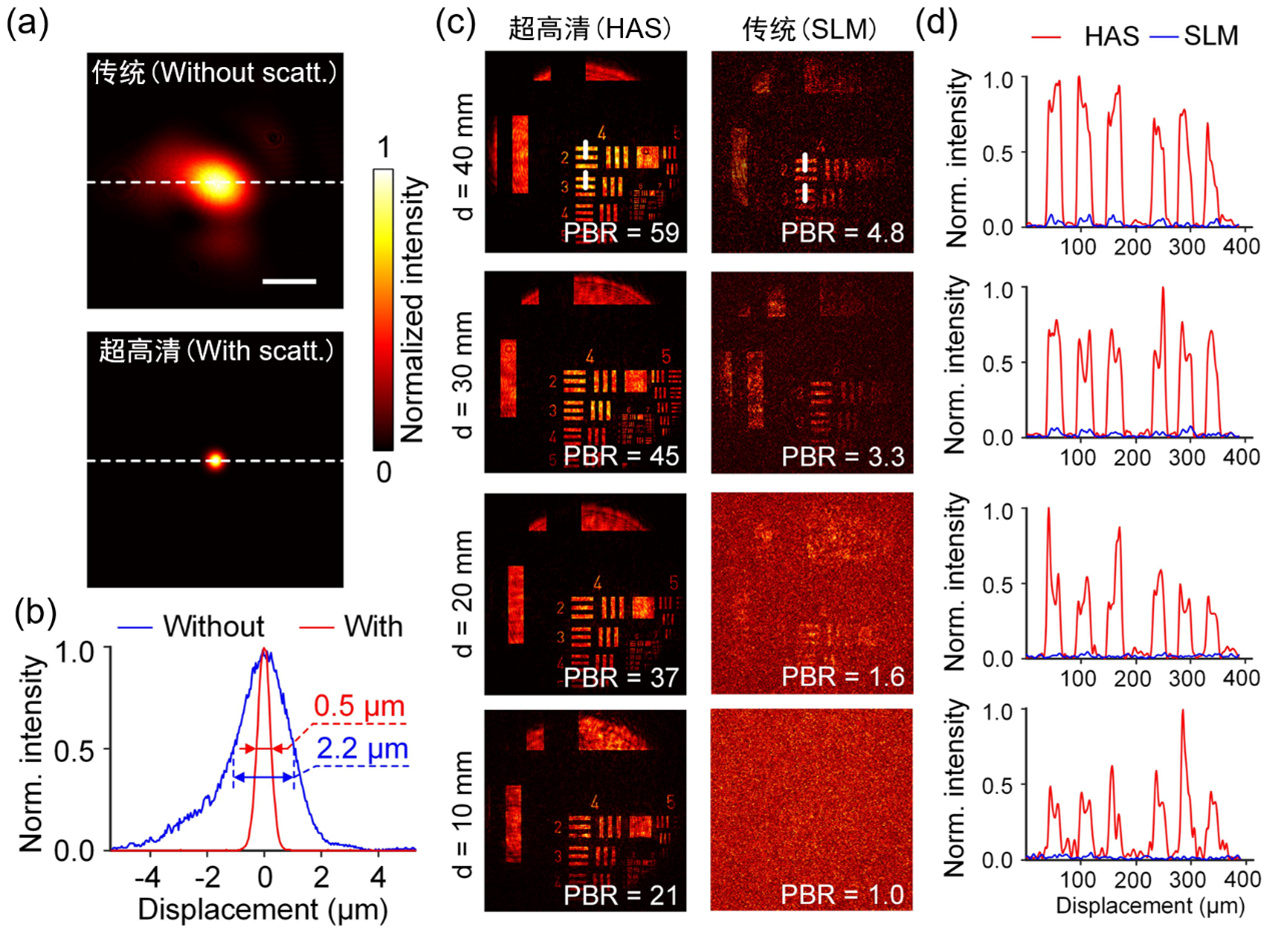- Home
- About Us
- Students
- Academics
-
Faculty
- Electrical Engineering
- Automation
- Computer Science & Engineering
- Electronic Engineering
- Instrument Science and Engineering
- Micro-Nano Electronics
- School of Software
- Academy of Information Technology and Electrical Engineering
- School of Cyber Security
- Electrical and Electronic Experimental Teaching Center
- Center for Advanced Electronic Materials and Devices
- Cooperative Medianet Innovation Center
- Alumni
-
Positions
-
Forum
News
- · Bin Dai's Team Unveils the Assembly Mechanism of β-Lactoglobulin Fibrils, Providing New Insights for the Development of Functional Nanomaterials
- · Mingyi Chen’s research group has made important progress in the field of analog-to-digital converter chips for brain-computer interface
- · Progress in the Development of Semiconductor Nanomaterials to Activate Pyroptosis for Cancer Therapy
- · Jiamiao Yang’s team achieved the high precision optoelectronic reservoir computing based on complex-value encoding
- · Significant Advancements in Resonator-Enhanced Quantum Sensing Achieved by Zenguihua's Team at the School of Sensing Science and Engineering
Jiamiao Yang’s team published important innovation on ultrahigh-fidelity 3D holographic display in Science Advances
Recently, Jiamiao Yang’s team from the School of Electronic Information and Electrical Engineering at Shanghai Jiao Tong University, in collaboration with Lihong V. Wang’s team from the California Institute of Technology, achieved a significant advancement in the field of ultrahigh-fidelity 3D holographic display (3DHD). This collaborative research was published in Science Advances entitled “An ultrahigh fidelity 3D holographic display using scattering to homogenize the angular spectrum,” with the School of Electronic Information and Electrical Engineering at Shanghai Jiao Tong University listed as the primary affiliation.

Background:
3DHD, a technology that preserves object shape information by precisely capturing the beam wavefront, allows the human eyes to perceive realistic 3D images. Its applications span across intelligent manufacturing, remote education, medical engineering, and virtual display. However, the current 3D holographic display technology suffers from limited fidelity, impeding its widespread implementation. This drawback primarily stems from two factors. Firstly, existing 3DHD rely on discrete digital holographic display devices like liquid crystal spatial light modulators (LC-SLM) and digital micromirror devices (DMD) for 3D image reconstruction. These digital devices encounter constraints such as a restricted number of modulation modes, large pixel sizes, and discrete phase modulation, making it challenging to achieve high-fidelity 3DHD display. Secondly, the high-frequency spatial components essential for high-definition imaging deviate significantly from the optical axis, leading to a substantial portion of high-frequency information falling beyond the effective recording aperture. This loss of high-frequency components further results in the blurred display of images.
Innovative results:
In response to this challenge, Jiamiao Yang’s team from Shanghai Jiao Tong University and Lihong V. Wang’s team from the California Institute of Technology introduced an ultrahigh-fidelity 3DHD using a scattering medium to homogenize the angular spectrum (HAS), facilitating the recording of complete frequency information. Compared to prior digital approaches, the proposed HAS-3DHD utilizes the scattering effect to disrupt the propagation trajectory of incident photons. This disruption effectively redistributes and thoroughly blends the high-frequency and low-frequency components of the optical field. By utilizing a photopolymer with a capacity for two billion modulation modes, a high-optical-wavelength scale pixel size and step-free continuous modulation, the HAS-3DHD can accurately restore the high-frequency components conventionally lost in digital 3DHD. These components can then be retroactively propagated through the scattering medium along their original trajectories, enabling the reconstruction of ultrahigh-fidelity holographic images. This innovative approach successfully resolves the fidelity issue stemming from the loss of high-frequency components and the limitations in hologram recording precision in existing holographic display technologies.

P2 Schematic of ultrahigh-fidelity 3DHD with the capability of recording full-frequency field components.
Through the comprehensive recording of full-frequency components, this research notably enhances the contrast and resolution of holographic displays, achieving a remarkable enhancement in the contrast of a focal spot to 6×106 and significantly refining its spatial resolution to 0.5 µm. These advancements represent an improvement of ~300 and 4.4 times, respectively, over conventional digital approaches. The photopolymer’s pixel size is at a scale equivalent to half a wavelength, which is notably 30 times smaller than the LC-SLM. Consequently, it enables the precise reconstruction of holographic images containing a blend of high and low-frequency components within an axial range spanning 10 to 40 mm. The peak-to-background ratio of the resolution plate holographic display reaches 59, signifying an increase of 12 times.

P3 Ultrahigh-fidelity 3DHD of single spot and complex image.
Owing to the spatial multiplexing ability of the photopolymer and the transmission channel selection of the scattering medium, the HAS-3DHD system can switch between different holograms and realize dynamic, high-resolution 3D holography by precisely adjusting the deflection angle between the photopolymer and the scattering medium. This research achieves the superimposition recording of multiple holograms through a 3D focal scanning module based on a digital micromirror device. These holograms, corresponding to 22 uniformly bright focused spots, were fully reconstructed through the scattering medium. Moreover, utilizing the selective transmission channel capacity of the scattering medium, this study realized 3D spiral dynamic holographic displays composed of 20 uniformly bright spots (1 mm × 1 mm × 26 mm).

P4 Holographic superposition recording and experimental result of dynamic 3DHD via HAS-3DHD.
About the paper
Associate Professor Jiamiao Yang from the School of Electronic Information and Electrical Engineering at Shanghai Jiao Tong University, along with Dr. Lei S. Li from the Department of Medical Engineering at the California Institute of Technology, and Dr. Qiaozhi He from the Institute of Marine Equipment at Shanghai Jiao Tong University, contribute as the co-first authors. Prof. Lihong V. Wang from the Department of Medical Engineering at the California Institute of Technology is the corresponding author of this paper. Shanghai Jiao Tong University is affiliated as the primary unit in this study, with the California Institute of Technology listed as the secondary unit. This research received support from the National Natural Science Foundation and other funding.
Jiamiao Yang’s team has been actively engaged in optical detection/imaging, optical field modulation, optical computing, as well as the technological development of intelligent optoelectronic instrument design, manufacturing, and integration. A.P. Jiamiao Yang, as the first author and corresponding author, has published over 30 papers in reputable academic journals such as Nature Communications, Science Advances (2 papers), Light: Science & Applications, Optica and Laser & Photonics Reviews. These contributions have garnered attention and recognition from various sources, including CCTV News Broadcast, AIP Scilight, and Phys.org.
Paper Link:
https://doi.org/10.1126/sciadv.adi9987
Team website:
https://juopt.sjtu.edu.cn
来源丨(单位名称)School of Sensing Science and Engineering
文稿丨(作者姓名)He Qiaozhi
-
Students
-
Faculty/Staff
-
Alumni
-
Vistors
-
Quick Links
